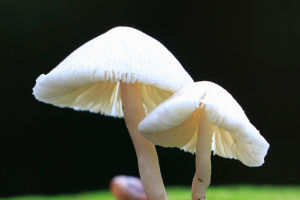Grape hyacinth is a relatively common species of hyacinth, its flowers are small like a bunch of grapes, very cute.
And it is easy to grow, today we will learn about the grape hyacinth its planting time and planting matters need to pay attention to.
If there is mildew on the seed balls, they should be soaked in carbendazim solution to disinfect them and remove the old roots from the bottom.
After soaking, take out the seed balls and put them in a cool and ventilated place to dry.
Plant in November and December in autumn, soil can be mixed with rotten soil, pearlite, sand and fertilizer, plant the small seed balls evenly into the soil, put in a ventilated, light location, about 20 days to germinate.
If the seed balls have mold, you can sterilize them by mixing water to make a solution of carbendazim, soak the seed balls into the solution for about 5-10 minutes, and remove the old roots at the bottom during the soaking process.
After soaking, take the seed balls out and put them in a cool, ventilated place to dry.
Soil for grape hyacinths must be permeable and well-drained and can be made from a mixture of leafy soil, perlite, sand, and a small amount of fertilizer.
There is no fixed plan or ratio for soil preparation, as long as it meets the growing needs.
Sterilize the prepared soil to remove any germs and insect eggs that may be present in the soil.
Add some soil first, and plant the seed ball head upwards, a pot of 5-6 or more will be better (depending on the size of the pot), continue to cover the soil is about 2-3 times the height of the seed ball, water thoroughly, put in a sunny place, wait for next year germination and flowering.
Watering seed balls before germination, do not water too much water, avoid prolonged rain, and keep the soil moist can.
Grape hyacinth is afraid of waterlogging, so must use a good permeable substrate, we can use peat soil, coconut bran, acid peat, and perlite (general-purpose nutrient soil can also be, permeability should be good).
You can add some appropriate fertilizer, it is recommended to use O green slow-release fertilizer, less recommended to have chicken manure type of organic fertilizer, you can use some earthworm soil and other humus.
Grape hyacinths bloom in late spring and early summer, producing bunches of fruit-like flowers.
They are usually cultivated in the fall. Grape hyacinths are very small and suitable for planting in pots.
There are still many varieties of grape hyacinths, so you can pick your favorite variety online.
The first step when we receive grape hyacinth seeds is to check whether there is mold, if there is serious mold, you can disinfect the treatment, and if the bulbs are healthy, you can directly plant.
A very important step in the cultivation of grape hyacinths is to choose a suitable pot.
For growing grape hyacinths in pots, it is better to use shallow pots with a bottom hole for sowing.
You can choose to plug the bottom hole of the pot with a small stone, so as to avoid excessive soil loss.
The way to plant grape hyacinths is to first fill the planting soil to the sixth or seventh percentile and bury all the seed balls with the buds pointing upwards in the soil, with the thickness of the soil being 2-3 times that of the seed balls.
Finally, the seeds are watered thoroughly and placed in an airy and sunny place.
Grape hyacinths should not be placed in direct sunlight and ventilated shade during the long bud stage.
When the buds grow out, they can be watered, sunbathed, and grow up quickly.
Light can be considered the soul of the daily management of grape hyacinths, which are preferred to grow in a sunny environment and are also tolerant of semi-shade.
During spring germination, it should be placed in a place with 60-70% light, which will help its flower stems to grow.


